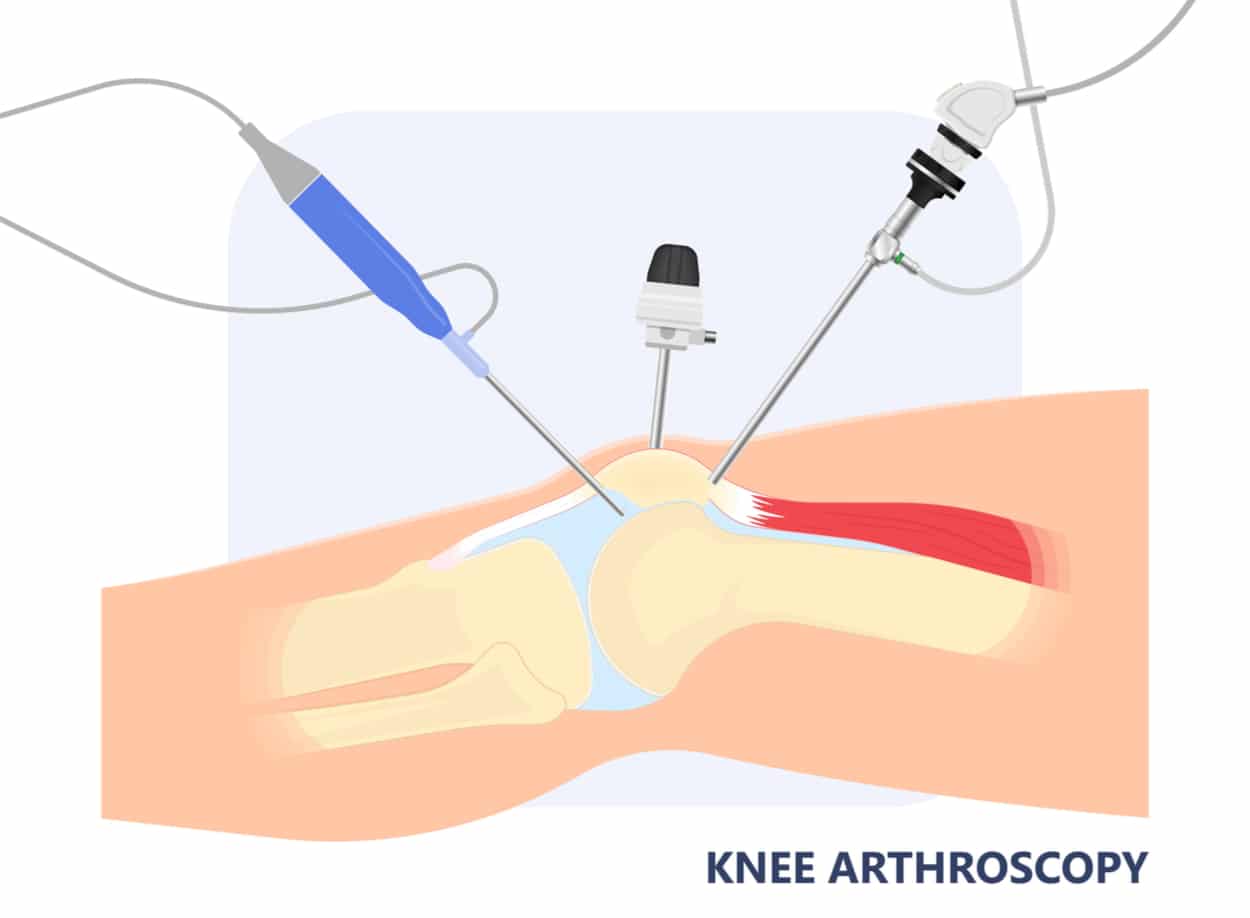When your orthopedic specialist tells you that you require an orthopedic surgical procedure for a joint problem, it can feel scary and intimidating. Often, orthopedic surgery is thought of as invasive, painful, and requiring a long, challenging recovery.
Enter arthroscopic surgery! Commonly referred to as arthroscopy, it is a minimally invasive procedure used to diagnose and treat joint problems. Because incisions are smaller and the procedure itself far less invasive than traditional open procedures, recovery is often quicker and easier to manage—and many patients can go home the same day as the procedure to start the recovery process in the comfort of their own surroundings.
Arthroscopic Surgery Explained
Arthroscopy or arthroscopic surgery is a surgical approach that can be used for many different procedures, including diagnosing problems with the joints or treating acute and chronic joint conditions. Unlike many traditional "open procedures," arthroscopy allows for outpatient treatment options in cases where hospital stays were once required. Due to the minimally invasive nature of arthroscopic surgery, many surgeons choose it over open procedures to help patients.
During an arthroscopic procedure, an incision approximately the size of a buttonhole on a shirt is used to insert the arthroscope. The scope is used to examine the joint and transmit images back to a monitor so the surgeon can easily view the area to be treated without actually seeing it first-hand. The tools used during an arthroscopic procedure are smaller and narrower than many traditional surgical tools, reducing the need for complicated and potentially risky open procedures.
When is Arthroscopic Surgery Used?

The six most commonly performed arthroscopic procedures are performed on the knee, shoulder, hip, ankle, elbow, and wrist. Arthroscopy is frequently used to diagnose and treat various conditions such as ACL tears, carpal tunnel syndrome, rotator cuff tears, meniscus tears, and much more. Procedures performed on the knee and shoulder tend to be the most common.
Is Arthroscopic Surgery Right for You?
To decide whether arthroscopic surgery is right for you, it is important to consult with your orthopedic surgeon. They will work with you to determine what procedure is best for your unique treatment needs. Like most surgical procedures, there are situations where arthroscopic surgery is not the best choice. If this is the case for you, your surgeon will work with you to determine an appropriate alternative.
Before your procedure, your surgeon will perform various preoperative tests. This may include imaging such as x-rays, CT scans, and MRIs. These tests are essential for your provider to see the structure of your injured joint and best determine a safe and successful surgical plan. They may also suggest blood work to check for infection, inflammation, or other preoperative concerns that could have a negative impact on your recovery.
Before and After Arthroscopic Surgery
Depending on your procedure, surgery may be performed in a hospital or a specialized surgical center. In our case, your surgery is performed at our state-of-the-art surgical center powered by Ohio Specialty Surgical Suites (OS3). You will meet with your provider before the date of your procedure to discuss your preoperative screening tests and confirm details concerning your surgery. Be sure to follow your provider's directions concerning food, drink, and medications in the days leading up to your procedure, as some cases require fasting for a period beforehand.
Recovery from arthroscopic surgery varies depending on the person and the procedure. Generally, pain and inflammation are successfully treated using rest, ice, and elevation. Pain from less extensive procedures may be successfully treated with over-the-counter medications such as Tylenol. More extensive procedures such as those involving larger joints may require a short course of prescription pain medication. Your doctor will talk with you about the best way to manage any pain and discomfort post-surgery.
One of the primary advantages of arthroscopic procedures is that they limit the damage to the soft tissues surrounding the joint, reducing bleeding, swelling, and inflammation. Because of this, recovery times for arthroscopic procedures tend to be much shorter than with open surgery. However, you should still follow your surgeons' directions in terms of activity levels as you recover.
Learn more about what to expect at OrthoUnited.
Surgeons Experienced in Arthroscopy
Our team of experienced orthopaedic surgeons is made up of individuals who are highly skilled in general orthopaedics, but many have their own unique specialties as well. Meet our surgeons specializing in arthroscopy!
Explore Your Surgical Options with OrthoUnited
Today, arthroscopic surgery is a frequently used alternative to open surgical procedures for diagnosis and treatment of joint problems. If an orthopedic procedure may be in your future, talk to your doctor to learn more about arthroscopic surgery and whether this less invasive option is right for you.
Contact OrthoUnited today to schedule a consultation with one of our talented doctors.
